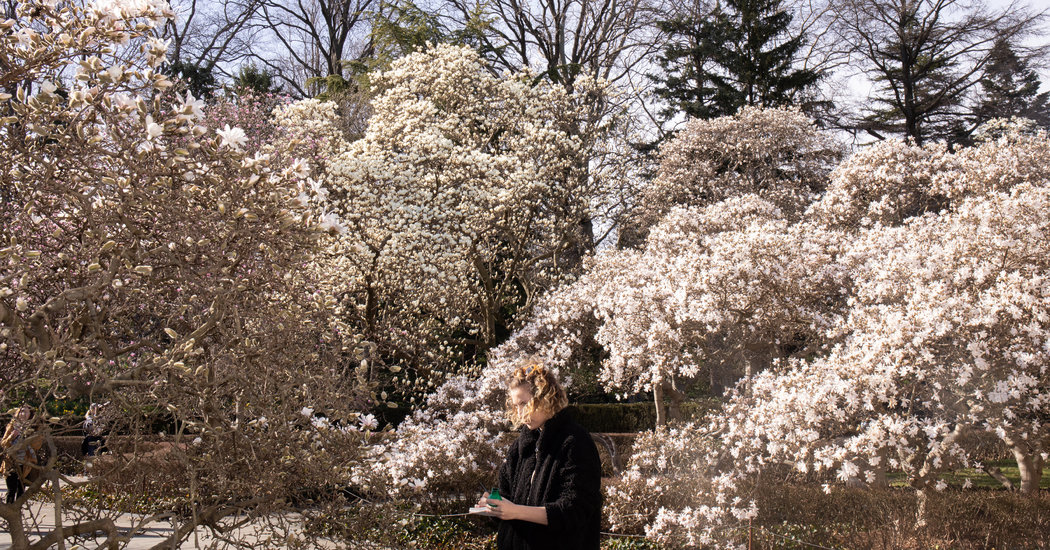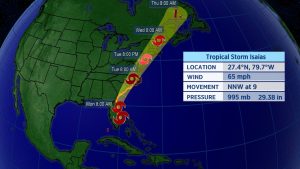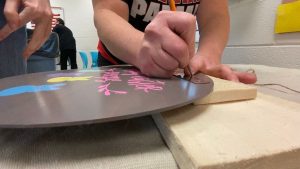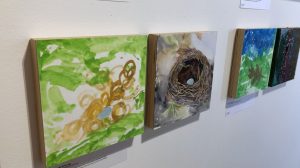It was the fig trees that tipped him off. Something was very unusual at the Brooklyn Botanic Garden. It was May in the early 2000s and Chris Roddick, the head arborist there, was making his rounds when he noticed a big mistake.
Months ago, a gardener had forgotten to wrap the fig trees in burlap, which protects them over the winter — an annual rite handed down from immigrants who brought them over from Italy 100 years before.
Mr. Roddick expected them to be damaged, perhaps even destroyed.
But they were fine. Actually, they looked great.
That year the garden reaped a phenomenal bounty of ripe figs.
“Before, we were just trying to keep the plants alive,” Mr. Roddick said. Suddenly, “it was like, OK, we can grow figs.”
This was a sign of things to come.
New species are thriving in the Metropolitan area, while those more associated with New England are slowly vanishing. This is because of rising temperatures, which are largely the result of human activity, including emissions from fossil fuels, according to the National Climate Assessment.
New York City, after years of being considered a humid continental climate, now sits within the humid subtropical climate zone. The classification requires that summers average above 72 degrees Fahrenheit — which New York’s have had since 1927 — and for winter months to stay above 27 degrees Fahrenheit, on average. The city has met that requirement for the last five years, despite the occasional cold snap. And the winters are only getting warmer.
For example, from January through March this year, the average temperature in Central Park was 42.5 degrees Fahrenheit, the second warmest on record, said Art DeGaetano, director of the National Oceanic and Atmospheric Administration’s Northeast Regional Climate Center. The record was set in 2012, at 43.1 degrees. Spring, meanwhile, arrived two weeks early this year. Magnolia and cherry trees bloomed in early March, a pleasure usually reserved for April. The intoxicating blooms were a welcome sight as the city shut down.
This summer, as New Yorkers enjoy piña coladas served on hot city sidewalks, they are also running for cover when weather events deluge the town, like July’s Tropical Storm Fay, which was book ended by several torrential downpours. The summer of the pandemic is on pace to register as one of the hottest on record.
And then there is the increased prevalence of the tropical sultry night. It is now common in the city for there to be 15 or so nights every summer when temperatures stay above 75 degrees, said Mr. DeGaetano, who added that 60 years ago, it was rare to see 10 such nights.
In 2012, the United States Department of Agriculture adjusted the city’s “hardiness” zone for plants to indicate the warmer weather. Tropical plants, such as yuccas and some hardy palms, can survive outdoors now in all seasons except winter. New Yorkers can find them in protected, sunny areas around the city, like south-facing spots near buildings. The growing period is also longer, which means that plants, branches and leaves have time to grow larger before the cold sets in.
Yet some gardeners are hesitant to embrace the subtropical classification of their city. Extreme low temperatures do damage to plants, not average temperatures, said Todd Forrest, the vice president for Horticulture and Living Collections at the New York Botanical Garden, in the Bronx.
“As of yet, I would not confidentially try to grow palmetto palms native to the tropical southeastern United States outside in New York,” Mr. Forrest said. “Three days of a polar vortex, and the plants would die.” He considers the subtropical category as still more applicable to states like Georgia, South Carolina and Florida.
For gardening, the city’s growing conditions now more closely mirror those of Maryland, coastal Virginia and Washington, D.C., more than the Deep South or the Northeast, Mr. Roddick and others said.
Still, there are plenty of visual clues that show how subtropical New York City has become. Here are a few of them.
In the early days of the coronavirus shutdown, spring was in full bloom. The scent of pink and white blossoms was tangible.
Gerald Giordano, senior horticulture consultant at the Westchester County Cooperative Extension, said he’s noticed many changes to spring in recent years. For instance, his friend in Tuckahoe, N.Y., now enjoys her gladiolas popping up, tall and bright, and even multiplying, immediately after winter — a new occurrence. And ivy leaves are growing to new heights on buildings, some even flowering and bearing fruit. He remembers the moment he noticed the change.
“In the spring of 2011, things happened in a way that nobody saw before,” Mr. Giordano said. “We had cherry trees blooming in the middle of March. For me, that was a real wake-up moment.”
Say goodbye to Maple
Expect changes in the trees we see. Several varieties of southern oak are moving north as the climate warms, said Dr. Nina Bassuk, a professor at the Urban Horticulture Institute at Cornell University. But native birch trees and sugar maples are starting to have trouble because of summer heat and drought, she added, so they will gradually become less prevalent.
In coming years, “there will be native plants, but they’ll be different native plants,” Dr. Bassuk said. “They won’t be the same plants that were here pre-Columbus.”
Southern species are thriving
At the New York Botanical Garden in the Bronx, what started out as an experiment — planting exotic species thought too sensitive to survive outdoors during New York winters — has become a successful and ongoing project.
Japanese flowering apricot and camellias, which normally thrive in the South (camellia is the state flower of Alabama, and Japanese flowering apricot has been popularized by the North Carolina State University Arboretum), successfully bloomed there last spring, Mr. Forrest said. He continued: “If you had asked me 25 years ago if they could survive unprotected, let alone thrive, in New York, I’d say, ‘Humbug.’”
Magnolia trees, a symbol of the Deep South, as well as dogwoods, are also hearty throughout the city.
Trees from Asia and South America are taking root
Mr. Roddick, of Brooklyn’s Botanic Garden, actually had his first big arboreal surprise in the mid-1990s. Similar to his fig tree epiphany a few years later, he noticed that a gardener had failed to cut back the crepe myrtle trees, which normally froze in the winter. “The trees were budding,” Mr. Roddick said. “We were shocked.”
Over the last 22 years, only once has an ice storm damaged the trees, he said.
Crepe myrtles are native to Southeast Asia, India and parts of the Central and South Pacific. They are also very common in the American South, where in the summer, they splash the landscape with red, pink, lavender and white blossoms. Until recently, crepe myrtles in New York City would grow no larger than a shrub; gardeners would cut them down to the root for winter.
Now the Brooklyn Botanic Garden grows several varieties year-round, and some have grown into 20-foot trees. They can be found throughout the city and the northern suburbs.
The botanic garden also grows the endangered monkey puzzle tree, from South America, outdoors in pots, year-round, whereas it used to only survive inside the conservatory. “It’s pretty amazing,” said Mr. Roddick.
Invasive weeds are out of control
Staff in Central Park and at the botanical gardens are currently focused on pulling up Japanese knotweed and porcelain berry, fast-growing weeds that attack trees and bushes, and which thrive in the warmer climate. “If we didn’t constantly pull it up, it would cover the entire garden, easily,” Mr. Forrest said.
During the city’s shutdown, the only gardeners at the Brooklyn Botanic Garden were those watering the greenhouse plants, Mr. Roddick said. The garden grounds benefited from a break from human visitors, he said, but without that constant maintenance, the weeds showed their might, he said.
“Things that used to be minor problems became major problems,” Mr. Roddick said. “Poison Ivy was all over the place. Invasive weeds of all sorts have taken a foothold.”
Voracious plant-eating pests are increasing
Bugs that used to die off in winter are now surviving and have the chance to multiply. The hemlock woolly adelgid is a bug that attacks hemlock trees, native to this area for thousands of years. Hemlocks, the redwoods of the East, provide cool, shaded areas north of the city, favored by black bears and migrating birds. Once the adelgids hit the trees, death is all but certain for the hemlocks (unless flocks of beetles are unleashed to counterattack).
More worrisome, among people who grow things, is the spotted lantern fly. It arrives at American ports in shipping crates from around the world. Without a hard frost to kill them off, the flies spread unchecked.
The bug has a varied appetite, including wild and cultivated plants, such as grapes and fruit. They hit Pennsylvania in recent years, and there is some concern that they will move into New York. “We think it’s a matter of time” before they arrive, Mr. Roddick said.
The Asian leaf hopper, emerald ash borer (which can kill off ash trees) and the Southern pine beetle are additional concerns.
Some of the invasive species, “are a factor of commerce,” Mr. Roddick said. “Commerce moves much faster than evolution.”
Rain is heavier, storms more frequent
Annually, the city gets about the same amount of rain as it has over the last few decades, but it comes in deluges, instead of steady, moderate downfalls, said Dr. Bassuk, the Cornell professor. And there is more time in between rain events, making drought more likely.
When rain comes hard and fast, it often runs off without being absorbed by the soil, said Mark Fisher, the former vice president of horticulture at the Brooklyn Botanic Garden. Erosion is another issue.
To help prevent runoff, the garden built an elaborate rain catchment system. Computer software prompts water levels in ponds to decrease when rain is predicted, so the ponds won’t overflow during rainstorms. The rainwater is filtered and reused for irrigation.
More gardeners, landscapers and homeowners will need such systems, said Rowan Blaik, associate vice president of the Living Collection at the garden. “It’s a very gradual but very consistent change we’re seeing.”
Meanwhile, preparing for storms has simply become another part of the horticulturalist’s job, Mr. Roddick said. “We’ve learned our lesson, let’s say that.”
Back in 2010, the hottest year on record, when tornadoes came through Brooklyn, the garden was caught off-guard. To deal with the aftermath, garden leaders had to stock up on chain saws and train employees on how to use them. Then came a Nor’easter, a hurricane, a tropical storm, and some more tornadoes. “Just after you cleaned up from one storm, there would be another,” Mr. Roddick said.
“Storm events both big and small, 20 years ago they happened so infrequently that nobody had to prepare for it,” Mr. Roddick said. “We sort of expect them now.”




